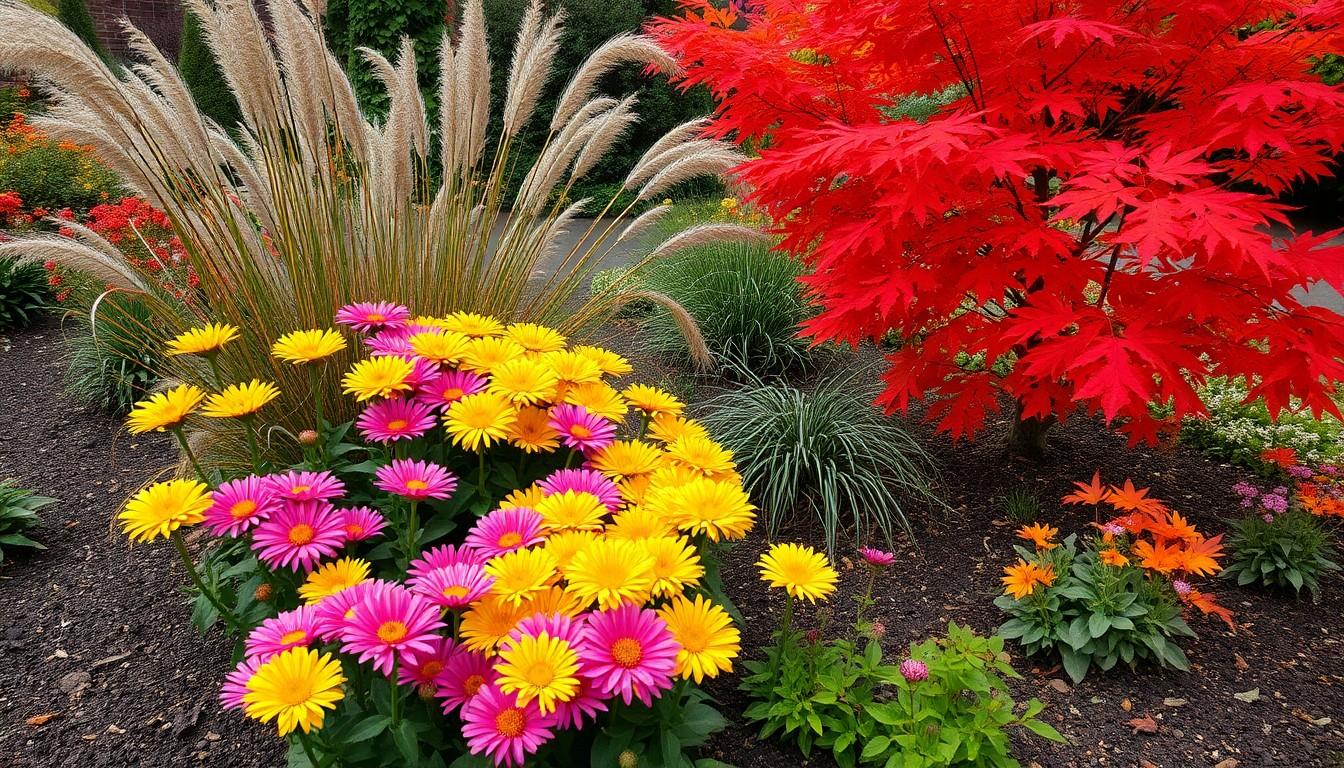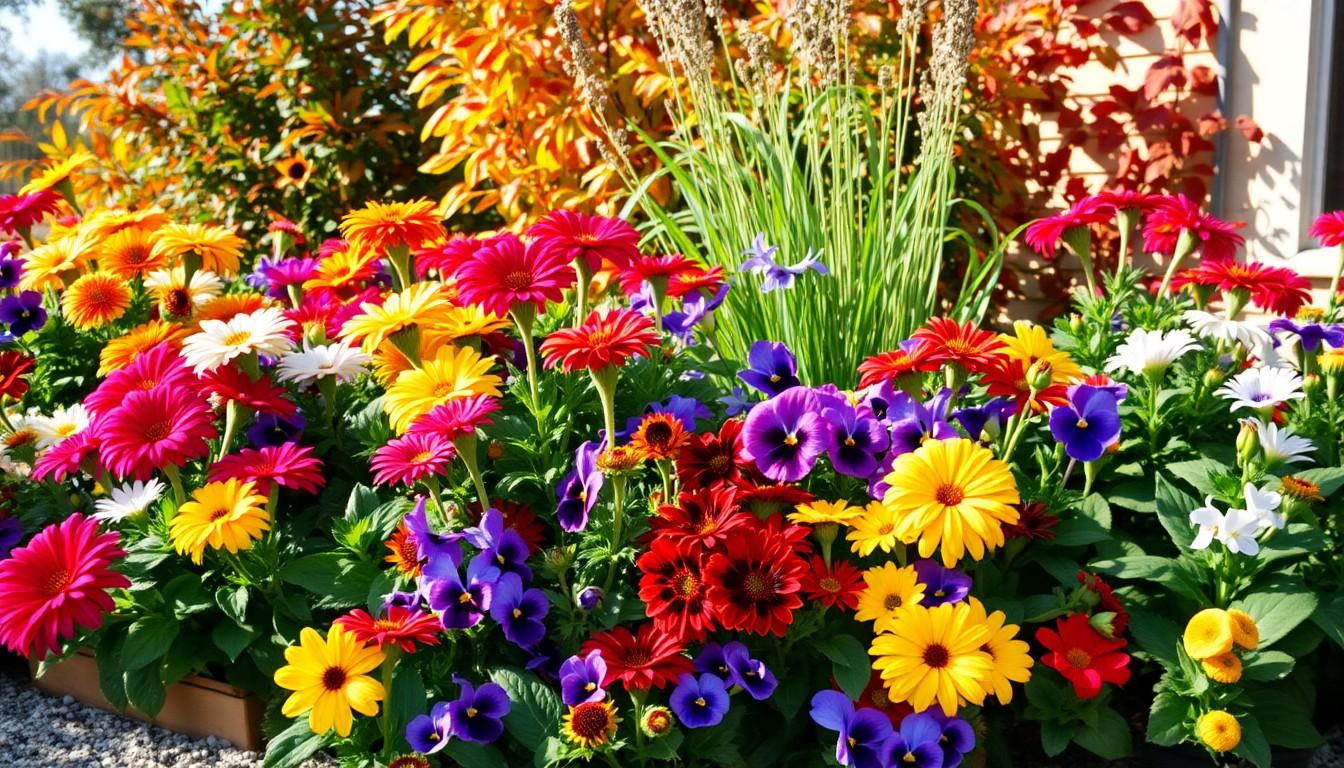The Best Fluffy Pancakes recipe you will fall in love with. Full of tips and tricks to help you make the best pancakes.

Fall Plants Outdoor: Transform Your Garden with Vibrant Color and Easy Care Tips
As summer waves goodbye and the air turns crisp, outdoor spaces deserve a fresh look. Fall isn’t just for pumpkin spice lattes; it’s the perfect time to elevate gardens with vibrant plants that thrive in cooler weather. Imagine walking through your yard, greeted by a kaleidoscope of colors that even the leaves envy.
Overview of Fall Plants Outdoor
Fall presents a unique opportunity to enrich outdoor spaces with plants that thrive in cooler temperatures. Various species offer vibrant colors and textures that enhance the beauty of gardens during this transitional period.
Chrysanthemums stand out for their abundant blooms, available in shades like yellow, pink, and purple. They serve as focal points, attracting pollinators and providing a burst of color.
Ornamental grasses add movement and interest with their feathery plumes. Varieties such as switching grass and pampas grass adapt well to fall weather, showcasing beautiful hues of gold and bronze.
Japanese maples present stunning foliage as their leaves transition from green to fiery red and orange. These trees establish a majestic presence in landscapes, drawing attention year-round.
Pansies and violas flourish in fall, offering resilient flowers that bloom even during chilly nights. Their wide range of colors makes them perfect for borders and containers.
Additionally, kale and cabbage are now favored for their ornamental qualities and nutritional value. These plants create an engaging visual with their vibrant purples and greens, often used in garden beds for dramatic effect.
Selecting the right fall plants contributes to a well-rounded outdoor aesthetic. Careful consideration of each plant’s growth habits and seasonal characteristics ensures a lively and attractive garden throughout the fall months.
Best Fall Plants for Your Garden

Choosing plants for fall enriches outdoor spaces with color and texture. These selections not only provide beauty but also ensure resilience in cooler temperatures.
Perennials That Thrive in Fall
Mums deliver vibrant blooms and consistently attract pollinators. Sedum, often called stonecrop, features succulent leaves that change color throughout the season, enhancing visual interest. Aster showcases a variety of colors, blooming late in the season and extending garden color into early winter. Hellebores stand out for their early flowering, bringing life to gardens even before winter fully fades. These perennials typically reemerge year after year, ensuring ongoing beauty.
Annuals for a Splash of Color
Pansies and violas thrive in cool weather, providing resilient flowers across a spectrum of hues. They often bloom abundantly in fall, adding bright patches to the garden. Snapdragons add unique shapes and cheerful colors, flourishing even with temperature fluctuations. Calendula, known for its vibrant yellow and orange petals, enhances garden vibrancy. Planting these annuals ensures a lively, colorful display as summer transitions to fall.
Tips for Planting and Caring for Fall Plants
Effective planting and care techniques improve the success of fall plants in outdoor spaces. Attention to specific factors ensures a vibrant garden even as temperatures drop.
Soil Preparation and Amendments
Quality soil supports the growth of fall plants. Testing soil pH is essential; most fall plants thrive in slightly acidic to neutral soil. Incorporating organic matter, like compost or well-rotted manure, enhances soil structure and fertility. Adding nutrients prepares the ground for new plantings. Drainage plays a critical role; amending heavy soils with sand or perlite prevents waterlogging. Tilling the soil before planting breaks up compacted areas, allowing root systems to establish easily. Recognizing and addressing soil needs promotes healthy growth throughout the season.
Watering and Maintenance Practices
Watering practices are crucial for fall plants. Adjusting watering based on temperatures, moisture levels, and plant type keeps plants healthy. Early morning watering minimizes evaporation and fungal issues, allowing plants to absorb moisture effectively. Mulching around plants conserves moisture and regulates soil temperature, benefiting root systems. Regularly checking for pests and diseases ensures quick responses to potential threats. Fertilizing with a balanced, slow-release fertilizer supports optimal growth without overwhelming plants. Pruning dead or damaged foliage encourages new growth and maintains visual appeal.
Seasonal Benefits of Fall Plants Outdoor
Fall plants provide numerous benefits that enhance outdoor spaces. Focusing on attracting wildlife improves the garden’s ecological balance.
Attracting Wildlife
Fall plants serve as vital resources for various species. Sweet nectar from late-blooming flowers invites pollinators such as bees and butterflies. Rich seeds and berries sustain birds and small mammals, offering food during the colder months. Structural plants like ornamental grasses provide shelter for beneficial insects, enhancing biodiversity. Dense foliage from shrubs creates safe nesting areas for wildlife, supporting local ecosystems. Planting diverse species fosters a healthy garden, ensuring that wildlife thrives throughout the season.
Enhancing Curb Appeal
Colorful fall plants significantly boost curb appeal. Brightly-hued chrysanthemums create eye-catching displays that draw admiration from passersby. Unique textures from ornamental grasses add depth and interest, transforming dull landscapes into vibrant scenes. Japanese maples with striking fall foliage act as focal points, elevating the overall aesthetic. Layering different plants adds visual dimension, creating an inviting atmosphere. Seasonal arrangements using pansies and violas ensure cheerful pops of color that last. Investing in a variety of fall plants transforms outdoor spaces, substantially increasing property attractiveness.
Conclusion
Enhancing outdoor spaces with fall plants not only beautifies gardens but also supports local wildlife. Choosing the right plants ensures a vibrant display that endures through cooler temperatures. By incorporating a mix of colorful blooms and structural elements, gardens can remain lively and inviting.
Proper care and maintenance will help these plants thrive, making them a valuable addition to any landscape. As the season changes, embracing the beauty of fall plants will create a stunning environment that attracts both attention and beneficial creatures. Transforming outdoor spaces this fall can lead to a more enjoyable and sustainable garden experience.
